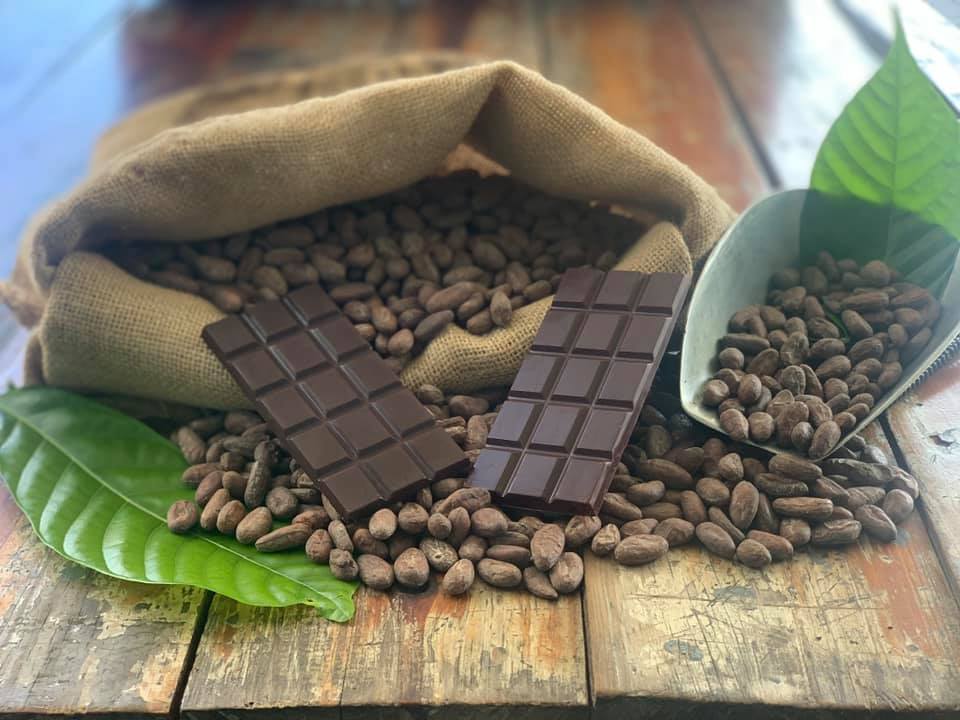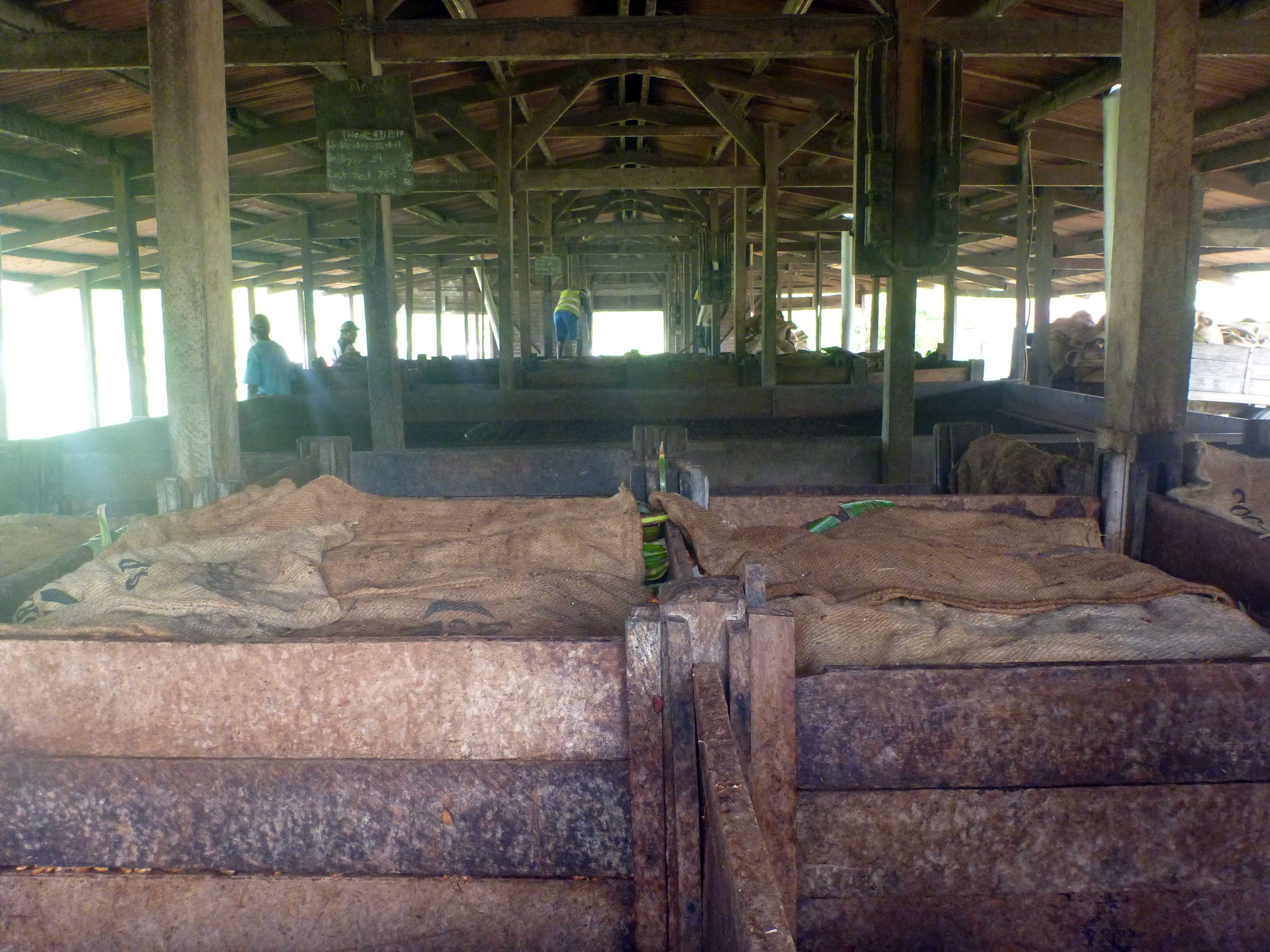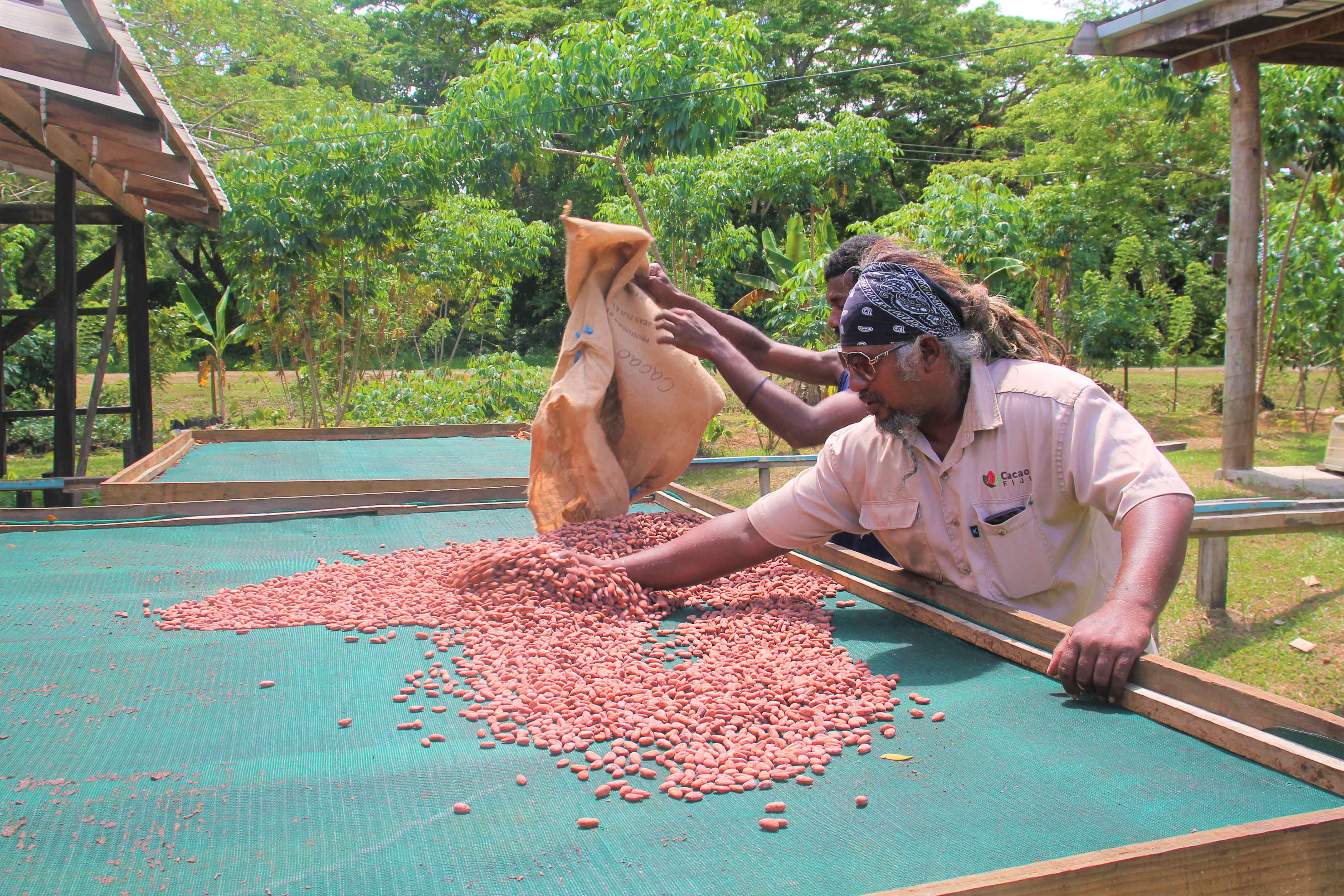Cocoa is an important export for the Pacific island countries of Fiji, Samoa, Solomon Islands and Vanuatu. In Vanuatu, 25% of rural households are involved in cocoa production, and in the Solomon Islands, cocoa is the biggest agricultural export earner, generating around A$20 million per year.
Over the years there has been an increase for domestic demand for cocoa products and potential for their industries to access higher value niche markets.
However, the volume of cocoa produced by these Pacific islands are small by global standards (less than 2% of total global cocoa production) and smallholder farmers continue to face a lack of access to training, financing for expansion, and improvement of export-orientated infrastructure to support the production and export of quality cocoa.
An ACIAR research project is supporting smallholder cocoa farmers across the Pacific to boost the quality of cocoa by taking up new fermentation methods.
The four-year project aims to strengthen cocoa value chains across Fiji, Samoa, Solomon Islands, Vanuatu, and Australia and is led by the Queensland Department of Agriculture & Fisheries (QDAF) in partnership with the Pacific Community (SPC) and the University of Adelaide.
Project leader and QDAF Principal Horticulturist, Dr Yan Diczbalis, said because of the limited market in some Pacific island countries for cocoa and cocoa products and the low volume of production, cocoa producers are missing out on potential profit.
‘70% of the world’s cocoa beans come from West African countries. The small volume of production in the Pacific means they have little bargaining power in the international commodity market. To raise market visibility, Pacific can concentrate on producing quality “origin” cocoa for the growing craft “bean to bar” chocolate industry,’ Dr Diczbalis said.
‘Global demand for craft chocolate is expected to grow steadily over the years. Consumer tastes are also becoming more refined, with increasing demand for niche and single-origin chocolate. There is a lot of potential for the Pacific cocoa producers to tap into premium and niche markets and enhance their livelihoods by selling fine flavoured and good quality cocoa for higher prices’, he added.

The project is also deploying improved post-harvest handling systems to deliver higher quality and better returns to producers and enhance the farmers’ livelihoods.
Mr Diczbalis explained that improved post-harvest handling systems are crucial to the future of Pacific cocoa.
‘Once cocoa pods ripen, they must be harvested manually with care. Once harvested, the cocoa pod is cracked open, and the rind is discarded; the pulp and seed (wet beans) are what farmers are after. There are about 30-50 seeds per pod, and the seeds and associated pulp are left to ferment.’
A cocoa bean consists of a seed coat, a kernel, and a germ. The seed coat is destroyed during the fermentation process, the germ is killed, and the beans develop the favours we associate with chocolate.
‘Traditionally, the fermentation process in the Pacific has not been well managed. Fermentation is usually carried out in wooden boxes, baskets, bags, or in a banana leaf-lined pit. Cocoa beans are placed in the “receptacle” and turned every other day daily for 6 to 8 days. To maximise the quality of the beans, fermentation needs to be well managed,’ Dr Diczbalis said.
Managing fermentation can be a very laborious process for farmers. The project has successfully trialled an alternative to the box fermentation method.

‘Fermentation requires oxygen, so when farmers use the “receptacle” fermentation method, they need to turn the cocoa at an appropriate frequency. The project has explored the use of the tray fermentation system. Cocoa beans are stacked in a series of 10cm high trays built from wood or bamboo,’ Dr Diczbalis said.
‘The trays are stacked on top of each other. The small gap between the trays allows air to circulate evenly through all the cocoa beans. With this method, they are fermented uniformly without the need for manual turning over 6 days. This saves the farmer time and labour.’
Dr Diczbalis added that some farmers across the region were adopting the tray fermentation methods, and there is growing interest amongst smallholder farmers who work with limited resources and time.
After fermentation, the beans can take anywhere from 5 to 10 days to dry. The drying process is just as crucial to quality as fermentation. Poor drying practices will lead to poor quality cocoa. In areas where there is a lot of rain and high humidity, such as the tropical environment of the Pacific, drying is a particular challenge to avoid the production of poor-quality beans.

‘We are also actively working on capacity building for the farmers as well. In partnership with the Ministry of Agriculture, we have had workshops and one on one with farmers on tray fermentation methods. Once the project is finished, the farmers will have the sustainable skills to pass their learnings to a new generation of farmers.’
‘We will continue working with the farmers and upskilling them. Cocoa farmers need to drive and be empowered to make the change’, he added.
ACIAR Program Manager for Horticulture, Ms Irene Kernot said ACIAR’s support to the Pacific includes reducing poverty, improving livelihoods in agriculture, and supporting more robust agribusiness development.
‘This project is improving returns on labour by introducing new technology and farming practices.’
Ms Kernot believes that adopting a ‘whole of chain’ approach to the cocoa export industry will lead to improved returns and the development and uptake of best practice in fermentation and drying to optimise cocoa quality.
The aligning genetic resources, production, and post-harvest systems to market opportunities for Pacific island and Australian cocoa is an ACIAR supported project is led by the University of Adelaide in partnership with the SPC and the QDAF.








